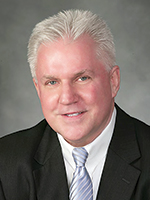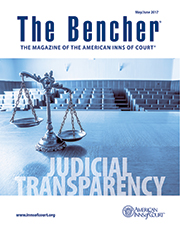Judges Speak Out about Lawyers’ Competence and eDiscovery
The Bencher—May/June 2017
By Kevin F. Brady, Esquire

 Technology is transforming the way we live and work at a pace and with complexities that make it nearly impossible to understand. Artificial intelligence, the Internet of Things, and data analytics are taking over our lives in ways we may not even notice. For example, the Amazon Echo is always on and listening for the “wake word” (for example, “Alexa”). It is always recording what it hears and, if the “wake word” isn’t detected, the recordings are overwritten. If the “wake word” is detected, however, the recording gets uploaded to Amazon’s servers for processing and analysis. This is just one example of an ever-expanding list of potential sources of relevant information to be considered in discovery.
Technology is transforming the way we live and work at a pace and with complexities that make it nearly impossible to understand. Artificial intelligence, the Internet of Things, and data analytics are taking over our lives in ways we may not even notice. For example, the Amazon Echo is always on and listening for the “wake word” (for example, “Alexa”). It is always recording what it hears and, if the “wake word” isn’t detected, the recordings are overwritten. If the “wake word” is detected, however, the recording gets uploaded to Amazon’s servers for processing and analysis. This is just one example of an ever-expanding list of potential sources of relevant information to be considered in discovery.
In December 2015, the Federal Rules of Civil Procedure were amended with a goal to reduce the burden and expense of electronic discovery. What is the impact of these changes? In its 3rd Annual Federal Judges Survey, Exterro, an electronic discovery software development company, asked federal judges for feedback on how the rule changes were impacting the manner in which cases are being litigated, and whether attorneys were demonstrating more competence in technology. The survey was completed by 22 federal judges from across the United States. The results, which can be found at http://www.exterro.com/judges-survey-17/, are both somewhat encouraging and underwhelming.
The survey results show that while judges feel that attorney competence in eDiscovery is improving, none of the respondents felt that the typical attorney had “the subject matter knowledge (legal and technical) required to effectively counsel clients on e-discovery matters.” The respondents noted that judges are doing better than lawyers in terms of technological competency—five percent of respondents described the judiciary as strong in terms of competency, 41% thought the judiciary was “good”, and 41% said the judiciary was “OK.”
According to the survey results, common eDiscovery mistakes occur at the preservation and collection/processing stages, and the primary cause of eDiscovery problems is poor or no cooperation between counsel and the parties. In fact, the only other cause the judges identified was a lack of education about eDiscovery.
One respondent summed up the two problems fairly succinctly— “lack of cooperation is the big problem in big cases, and lack of education is a big problem in small cases.” The judges also overwhelming agreed that applying the principles of cooperation and proportionality in litigating cases offered the greatest potential for improvement. Greater emphasis on Rule 26(f) conferences came in a distant second (18%). The respondents provided suggestions for what parties could do better when making proportionality arguments: (i) suggest alternative remedies (tiering or phasing discovery); (ii) use metrics: (iii) cooperate with opposing counsel; and (iv) stop relying on boilerplate arguments about costs.
When asked if lawyers were taking advantage of the option under Rule 34 to send document requests in advance of the Rule 26(f) conference, the results imply that many lawyers are still not familiar with that option under Rule 34. In September 2016, one decision openly criticized judges who were not following the language of amended Rule 26, but instead were relying on the “reasonably calculated” language to define the scope of permissible discovery as though it was still part of Rule 26(b)(1). Another court criticized judges who were choosing to define “relevance” by referencing a 1978 United States Supreme Court decision, Oppenheimer Fund, Inc. v. Sanders, 437 U.S. 340, 351 (1978), noting that the correct construction of the term “relevant” for discovery under the 2015 amendments does not include the broader concept of “subject matter” of the action on which the Oppenheimer court relied.
In terms of sanctions and new Rule 37(e), the respondents indicated that, while Rule 37(e) gives the parties a blueprint for taking proactive steps to protect themselves from spoliation sanctions involving ESI, there are still open questions about how judges will interpret Rule 37(e) when it comes to remedying certain behavior, and about whether judges still have inherent authority to issue sanctions for egregious behavior with respect to ESI.
One of the key takeaways from the survey: cooperation among counsel is a key to success, and, if it happens early in the case, lawyers (and judges) will be better positioned to reduce the burden and expense of eDiscovery.
Kevin F. Brady, Esquire is of counsel in the firm of Redgrave LLP in Washington, DC. He is the past president of the Richard K. Herrmann Technology AIC in Wilmington, DE, and a former member of the American Inns of Court Board of Trustees.
© 2017 Kevin F. Brady, Esq. This article was originally published in the May/June 2017 issue of The Bencher, a bi-monthly publication of the American Inns of Court. This article, in full or in part, may not be copied, reprinted, distributed, or stored electronically in any form without the express written consent of the American Inns of Court.